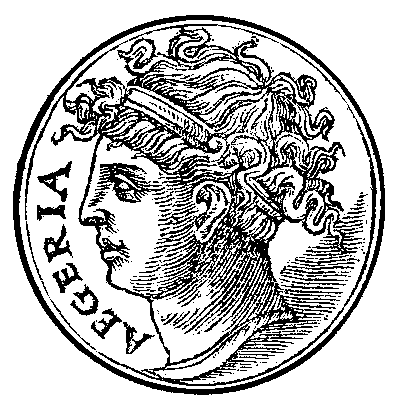Camenae on:
[Wikipedia]
[Google]
[Amazon]
 In
In
Myth Index - Camenae
Childhood goddesses Oracular goddesses Roman goddesses Water goddesses {{AncientRome-myth-stub
 In
In Roman mythology
Roman mythology is the body of myths of ancient Rome as represented in the literature and visual arts of the Romans. One of a wide variety of genres of Roman folklore, ''Roman mythology'' may also refer to the modern study of these representat ...
, the Camenae (; also ''Casmenae'', ''Camoenae'') were originally goddesses of childbirth, wells and fountains, and also prophetic deities.
List of Camenae
There were four Camenae: *Carmenta
In ancient Roman religion and myth, Carmenta was a goddess of childbirth and prophecy, associated with technological innovation as well as the protection of mothers and children and a patron of midwives. She was also said to have invented the ...
, or Carmentis
* Egeria, or Ægeria, or Aegeria
*Antevorta In ancient Roman religion, Antevorta was a goddess of the future, also known as Porrima. She and her sister Postverta (or Postvorta) were described as companions or siblings of the goddess Carmenta, sometimes referred to as "the Carmentae". They may ...
, or Porrima
*Postverta In Roman mythology, Postverta or Postvorta was the goddess of the past and one of the two Carmentes (along with her sister Antevorta, or prorsa contracted form of ''Proversa''). They were companions of the goddess Carmenta, and probably embodied ...
, or Postvorta, or Prorsa
The last two were sometimes specifically referred to as the Carmentae and in ancient times might have been two aspects of Carmenta rather than separate figures; in later times, however, they are distinct beings believed to protect women in labor.
Carmenta was chief among the nymphs. Her festival day, the Carmentalia
Carmentalia was the two feast days (11 January and 15 January) of the Roman goddess Carmenta. She had her temple atop the Capitoline Hill
The Capitolium or Capitoline Hill ( ; it, Campidoglio ; la, Mons Capitolinus ), between the Forum ...
, featured water ritually drawn by Vestal Virgin
In ancient Rome, the Vestal Virgins or Vestals ( la, Vestālēs, singular ) were priestesses of Vesta, virgin goddess of Rome's sacred hearth and its flame.
The Vestals were unlike any other public priesthood. They were chosen before puberty ...
s from the spring outside the Porta Capena
Porta Capena was a gate in the Servian Wall in Rome, Italy.
The gate was located in the area of Piazza di Porta Capena, where the Caelian, Palatine and Aventine hills meet. Probably its exact position was between the entrance of Via di Valle de ...
.
The Camenae were later identified with the Greek
Greek may refer to:
Greece
Anything of, from, or related to Greece, a country in Southern Europe:
*Greeks, an ethnic group.
*Greek language, a branch of the Indo-European language family.
**Proto-Greek language, the assumed last common ancestor ...
Muses
In ancient Greek religion and mythology, the Muses ( grc, Μοῦσαι, Moûsai, el, Μούσες, Múses) are the inspirational goddesses of literature, science, and the arts. They were considered the source of the knowledge embodied in the p ...
; in his translation of Homer's ''Odyssey'', Livius Andronicus
Lucius Livius Andronicus (; el, Λούκιος Λίβιος Ανδρόνικος; c. 284 – c. 204 BC) was a Greco-Roman dramatist and epic poet of the Old Latin period during the Roman Republic. He began as an educator in the service of a n ...
rendered the Greek word ''Mousa'' as ''Camena'' and Horace
Quintus Horatius Flaccus (; 8 December 65 – 27 November 8 BC), known in the English-speaking world as Horace (), was the leading Roman lyric poet during the time of Augustus (also known as Octavian). The rhetorician Quintilian regarded his ' ...
refers to poetic inspiration as the "soft breath of the Greek Camena" (spiritum Graiae tenuem Camenae) in Odes
Odes may refer to:
*The plural of ode, a type of poem
*Odes (Horace), ''Odes'' (Horace), a collection of poems by the Roman author Horace, circa 23 BCE
*Odes of Solomon, a pseudepigraphic book of the Bible
*Book of Odes (Bible), a Deuterocanonic ...
II.16.
See also
*Casmenae
Casmenae or Kasmenai ( grc, Κασμέναι, Casmene in Italian) was an ancient Greek colony located on the Hyblaean Mountains, founded in 644 BC by the Syracusans at a strategic position for the control of central Sicily. It was also inte ...
*Crinaeae
In Greek mythology, the Crinaeae (; grc, Κρηναῖαι, from Greek " κρήνη") were a type of Naiad nymphs associated with fountains or wells.
The number of Crinaeae includes but is not limited to:
*Aganippe
*Appias
* Myrtoessa
* The S ...
*Naiad
In Greek mythology, the naiads (; grc-gre, ναϊάδες, naïádes) are a type of female spirit, or nymph, presiding over fountains, wells, springs, streams, brooks and other bodies of fresh water.
They are distinct from river gods, who ...
*Nymph
A nymph ( grc, νύμφη, nýmphē, el, script=Latn, nímfi, label=Modern Greek; , ) in ancient Greek folklore is a minor female nature deity. Different from Greek goddesses, nymphs are generally regarded as personifications of nature, are ty ...
*Pegasides
Pegasides ( el, Πηγασίδες, singular: pegasis) were nymphs of Greek mythology connected with wells and springs,Gardner, James (1858-60); p. 639. specifically those that the mythical horse Pegasus created by striking the ground with his ...
References
External links
Myth Index - Camenae
Childhood goddesses Oracular goddesses Roman goddesses Water goddesses {{AncientRome-myth-stub